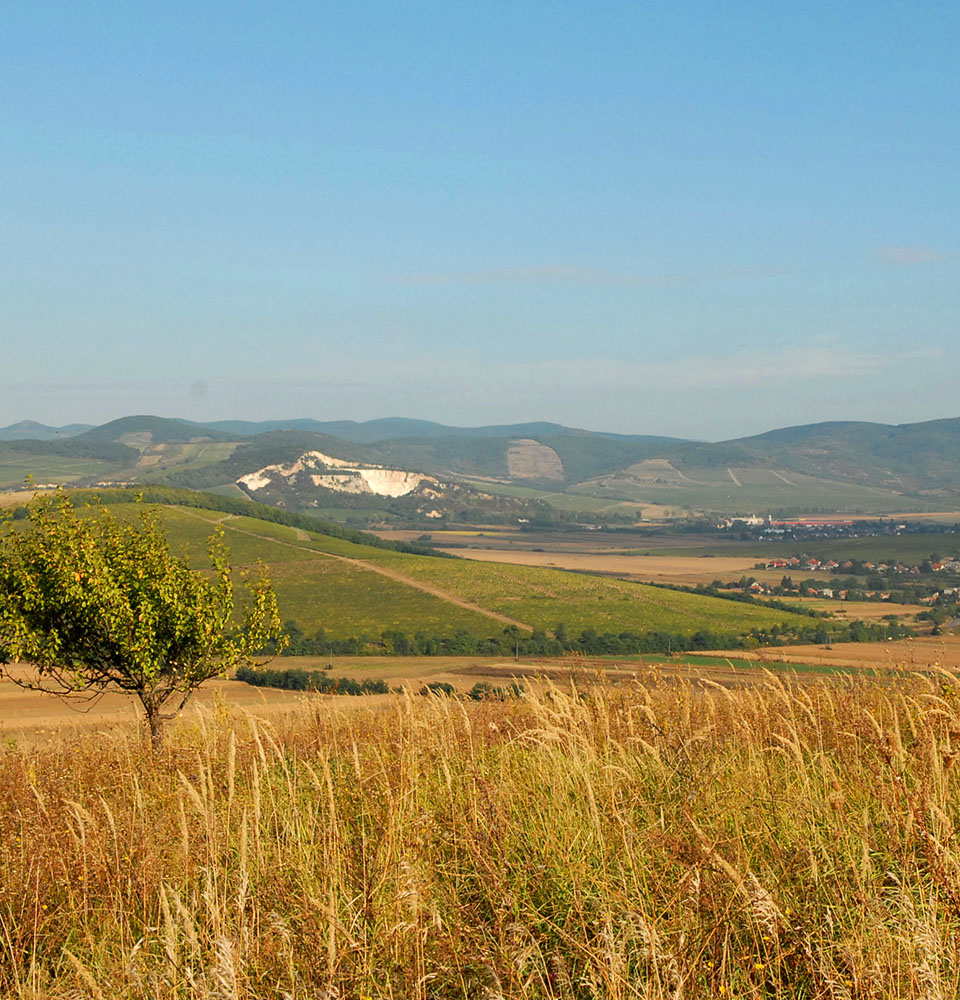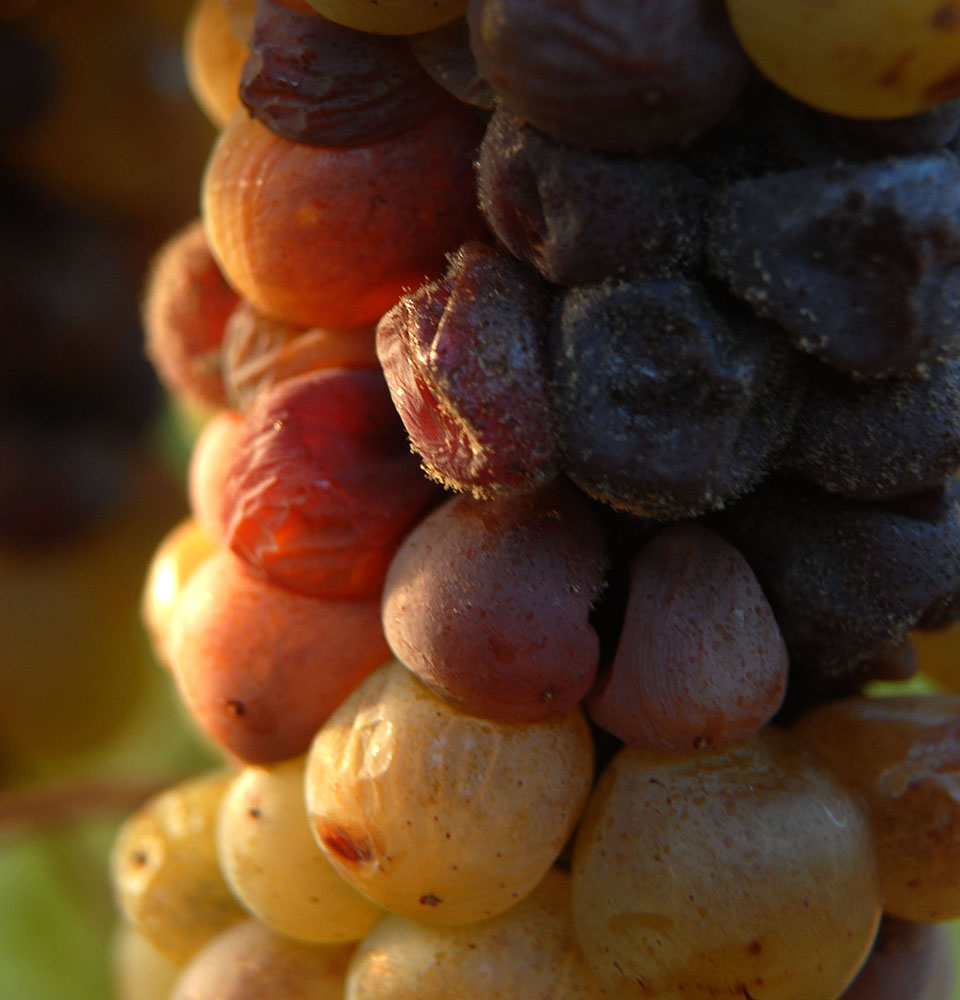
Microclimate
Semi-continental, sheltered from the north wind. Summers are dry and warm. The beginning of autumn is rainier, which helps the noble mold called Botrytis cinerea to settle on the grapes.
From the Bodrog and the Tisza, the wind sometimes brings cooling, moist air, which helps the formation of fog. The month of October is usually beautiful, dry, autumnal, this is when the conditions for Botrytis are optimal and the berries attacked by the mold begin to concentrate strongly.
The average annual rainfall is 525mm. The number of hours of sunshine per year is 2009.

Botrytis
The growth of the mold called Botrytis cinerea in the Tokaj region is of great importance, as it allows making three (or even four) different wines at harvest times.
The time when the fungus attacks the grapes is important as, depending on it, the effects can be useful or harmful. If Botrytis attacks unripe fruit in wet, rainy weather, the crop will be destroyed, the fungus is called the gray mold then. If, on the other hand, the conditions (topography, weather, alternation of dry and wet periods, grape variety, ripe bunches, humidity, fog, etc.) are right, we talk of a noble rot, which leads to the formation of concentrated berries (asszú) that allow making of beautiful wines.
There are two important conditions for the growth of the Botrytis fungus in our wine region:
- Often, after a dry, warm summer, a cool, rainy period ensues in the first weeks of September, which favors the development of Botrytis.
- In October, the declining night temperature leads to the formation of a thick fog over the Bodrog river, which disappears during the day. This, combined with a pleasant, slightly windy weather, makes Botrytis multiply. The aszú berries are formed in a few days. They will be more concentrated and richer due to the lost moisture content.
Depending on how much shriveled and concentrated the berries are, the harvest can be organised in several phases:
- At the October/November harvest, a healthy whole bunch may contain aszú berries, which we process without separating to make a late-harvest sweet wine.
- For the szamorodni wines the harvest takes place at a later stage. Then we press the partly infected and partly healthy bunches, but first we usually subject them to destemming and then we soak them. Depending on the spread of Botrytis the sugar content in the wine can range from the aszú levels (sweet szamorodni) all the way to dry szamorodni.
- Between October and December, we separately harvest just the shriveled aszú berries, one by one, strictly by hand, from which the wonder of nature, the aszú wine, is made.


